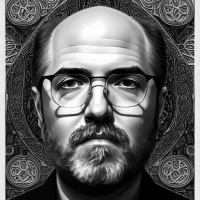The Expanse Season 3 Episode 10 Review: Dandelion Sky
The protomolecule’s true nature takes shape in this week’s The Expanse, but plenty of questions remain… in fact, what just happened?
This week’s The Expanse was all about taking a pivotal moment from the James S.A. Corey novels, one that was seemingly impossible to translate to the small screen, and making it work visually, and the truth is it’s very difficult for one who has read Abbadon’s Gate to judge whether non-readers were able to figure out what the hell was going on. On the one hand, the speed limit idea was well explained, and Holden’s journey to the nucleus with multiple pursuers held plenty of excitement, but on the other hand, many of the consequences of what happened in the central station were left up in the air leaving things enticingly, but for some perhaps confusingly, unresolved.
Even Melba’s story arc was left hanging, which was no doubt a strategic choice, but when added to the other dangling threads, it was perhaps a risky one. It was inevitable that Tilly Fagan would run into Clarissa Mao (Melba’s true identity) at some point, and Tilly’s misperception of the situation was an interesting way to frame the confrontation. Thinking that Clarissa was hiding from unfair persecution through guilt by association with her father, Tilly’s offer of a lawyer was a genuine and generous offer, but Clarissa was clearly focused on her fear of discovery. The question now is what will she do now that she has activated her berserker mode?
If Tilly is harmed, Anna will feel even worse for encouraging Tilly to reach out to Clarissa than she already did for ignoring Lieutenant Nemeroff, the unfortunate Methodist whose concerns she pushed aside. The Expanse has enjoyed presenting the pastor as someone whose strong family values and healthy, modernist approach to faith doesn’t quell her insatiable appetite for the unknown. Her guilt over Nemeroff’s death and her focus on science and wonder rather than service to her congregants will likely inform her actions moving forward, a welcome enriching of a character that has sometimes felt detached from the main action of the series.
Luckily for us, Anna’s curiosity allowed the scientist, Kolvoord, to deliver exposition about the Ring’s “speed limit” and the perceived threat of anything that exceeds it. With the slingshot racer, the Martian probe, and the Behemoth’s missile all in stable orbit around the nucleus, each with its own purple glow holding it in place, the stage was set for what happened later to all of the ships inside the Ring. The 18,000kph allowed velocity is what informed both Naomi and Clarissa of the likelihood they could get to Holden before Bobbie and her fellow Marines did, and the contrast between that relatively slow speed and a full stop is consequently known to be potentially devastating by even the most physics-challenged audience members.
Perhaps Holden should have closed the door behind him to prevent the Marines from following him inside, not that he knew how. His slow approach to the nucleus accompanied by Miller was both satisfyingly protracted and appropriately unrealistic with the detective “standing” nearby. Miller was still as cryptic as ever, but he revealed that the protomolecule originated from a civilization a billion years ago that left behind a bunch of locked doors. This detail, along with the characterization of himself as Mozart to Holden’s monkey, confirmed what we’ve believed all along about the advanced nature of the protomolecule. The records Miller wanted Holden to access will hopefully yield more clues to follow and more insight to enjoy.
Holden’s vision that resulted from completing the circuit was perhaps the most mind-boggling aspect of this episode. Again, readers of the novels can read between the lines, but how clear was it to first-timers? If the vision was meant to be mysterious, is it enticingly puzzling or frustratingly confusing? Visually, it was a spectacular representation of the long-gone civilization, and the views that Holden saw of different star systems appearing in a grid-like pattern reveal much about the Ring’s true purpose. But did Holden witness devastating destruction or a slow decline fast-forwarded? Kudos to the visual effects team for putting together a beautifully poetic vision worthy of 2001: A Space Odyssey. Hopefully, it connected with viewers.
A much more conventional emotional play unfolded to great effect on the Behemoth, where Ashford’s mild rebuke to Drummer for letting Naomi leave the ship in a time of war held a wealth of subtext. While we might admire the grizzled Belter for chiding Diogo against suggesting mutiny, Drummer rightly pointed out that Ashford’s critical advice in front of the crew places him in a position of plausible deniability when “the turn comes.” This particular hanging thread is much more intriguing than the others as Ashford insists they work it out, with Drummer responding, “Or else what?” Love her!
There are plenty of other moments to love in this episode of The Expanse, including Naomi’s puzzlement at the Roci’s lack of response to her calls, Amos’ warped reassurance that he’ll take Alex with him if things go to shit, and Miller’s colorful metaphor of the angel that meets the dying child halfway. The Expanse has always capitalized on the literary scale of its storytelling, and “Dandelion Sky” is no exception. What remains to be seen is whether the hanging threads in this episode will result in excited speculation or disconcerted befuddlement.
